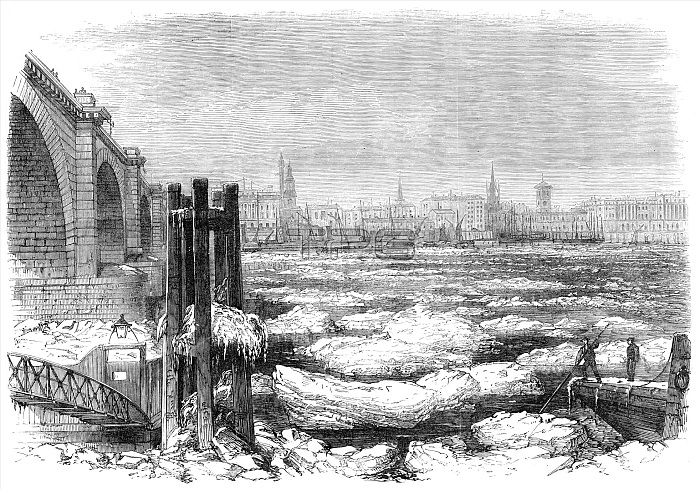
Ice in the Thames at London Bridge, 1870. ...the surface of the Thames from the tidal reach was, at low water, completely blocked with masses of ice, which caused an almost entire suspension of steam-boat navigation. As soon as the force of the tide was spent, the ice began to form in masses, and it was only when the water again began to flow that it was broken up. In some places the river was full of ice, many of the pieces being quite 2 ft. thick...In some parts of the river there were skating and sliding. On the Monday morning the steamers of the Iron and Citizen and Watermens Companies ceased running, and the only vessels that could be seen trying to make up the river against the heavy masses of floating ice were a few steam-tugs with coal-barges in tow. All the vessels lying moored in the Pool were literally bound in with the ice which froze to their sides; and in many parts where the tide was not much felt, the surface of the water presented an unbroken sheet of ice. At high tide, between eleven and twelve oclock...the combined forces of the wind and tide and the weight of the ice caused several vessels to break from their moorings, and caused serious collisions. Some of the ice floating on the top of the water was...20 ft. long. From "Illustrated London News", 1870.
| px | px | dpi | = | cm | x | cm | = | MB |
Details
Creative#:
TOP29942791
Source:
達志影像
Authorization Type:
RM
Release Information:
須由TPG 完整授權
Model Release:
Not Required
Property Release:
Not Required
Right to Privacy:
No
Same folder images:

 Loading
Loading